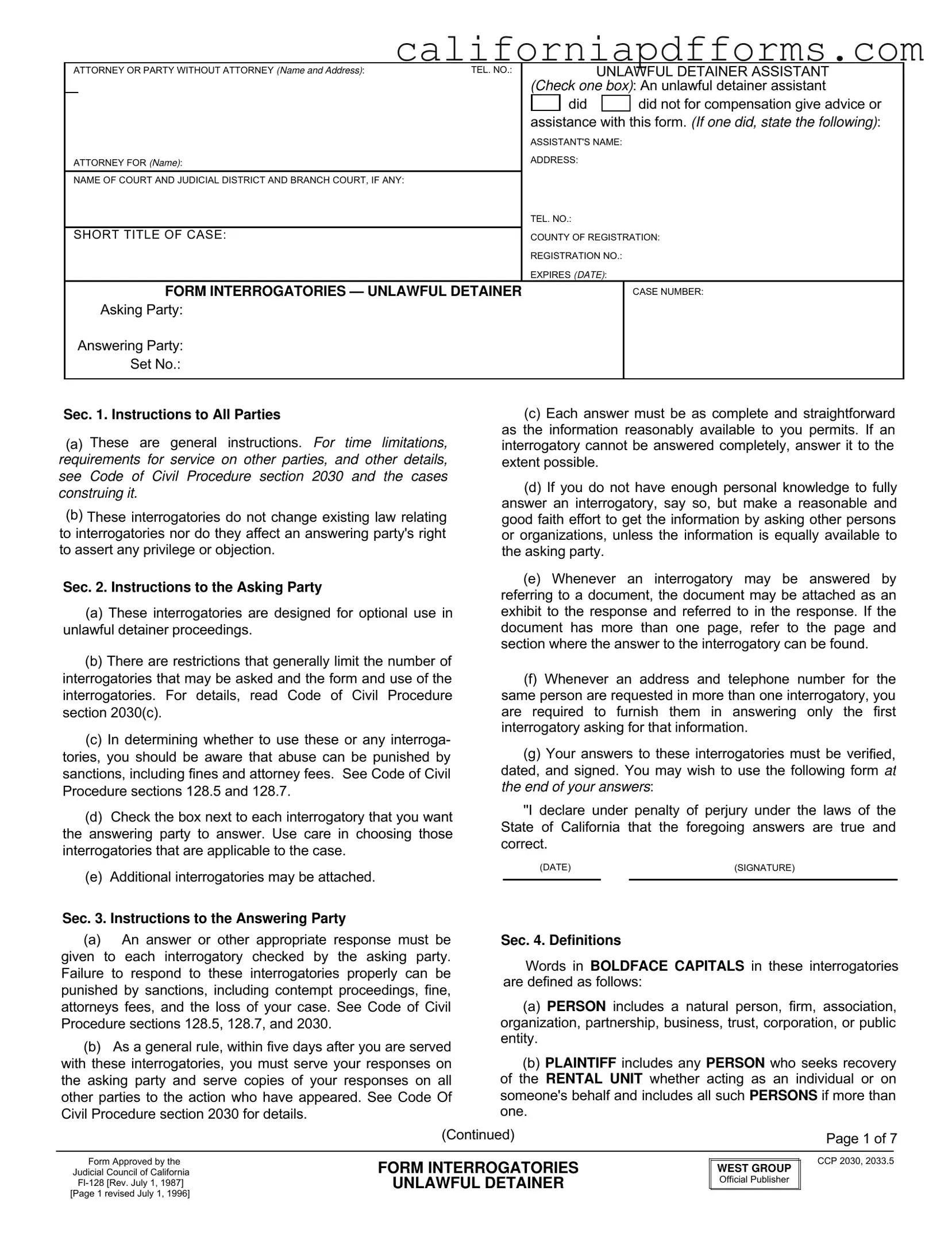The California Fi 128 form, also known as the Form Interrogatories for Unlawful Detainer, is designed to facilitate the exchange of information between parties involved in unlawful detainer proceedings. This form allows the asking party to submit specific questions to the answering party, which must be answered in a timely manner. The form helps clarify the facts of the case and assists both parties in preparing for trial or settlement discussions.
The California Fi 128 form is intended for use by both landlords and tenants involved in unlawful detainer actions. Landlords may use the form to gather information from tenants regarding their tenancy, while tenants may use it to respond to inquiries from landlords. This form is particularly useful in situations where one party seeks to recover possession of a rental unit and needs to establish the facts surrounding the tenancy.
The California Fi 128 form contains several key sections, including:
-
Instructions to All Parties:
General guidance on how to complete and respond to the interrogatories.
-
Instructions to the Asking Party:
Specific instructions for the party initiating the interrogatories.
-
Instructions to the Answering Party:
Guidelines for the party responding to the interrogatories.
-
Definitions:
Clarification of terms used within the form, such as "person," "landlord," and "rental unit."
-
Interrogatories:
A series of questions that can be used to gather information relevant to the unlawful detainer case.
Failure to respond properly to the interrogatories outlined in the California Fi 128 form can lead to serious consequences. The answering party may face sanctions, which could include fines, attorney fees, or even contempt proceedings. In some cases, inadequate responses may negatively impact the party's position in the case, potentially resulting in the loss of the case altogether.
Generally, a party must respond to the interrogatories within five days after being served with the form. It is essential for the responding party to adhere to this timeline to avoid potential penalties. Responses should be served on the asking party and copies should be provided to all other parties involved in the action who have appeared in the case.
Yes, additional interrogatories may be attached to the California Fi 128 form. However, it is important to ensure that the questions are relevant and comply with the limitations set forth in the California Code of Civil Procedure. Careful consideration should be given when selecting which interrogatories to include, as abuse of the interrogatory process can lead to sanctions.
